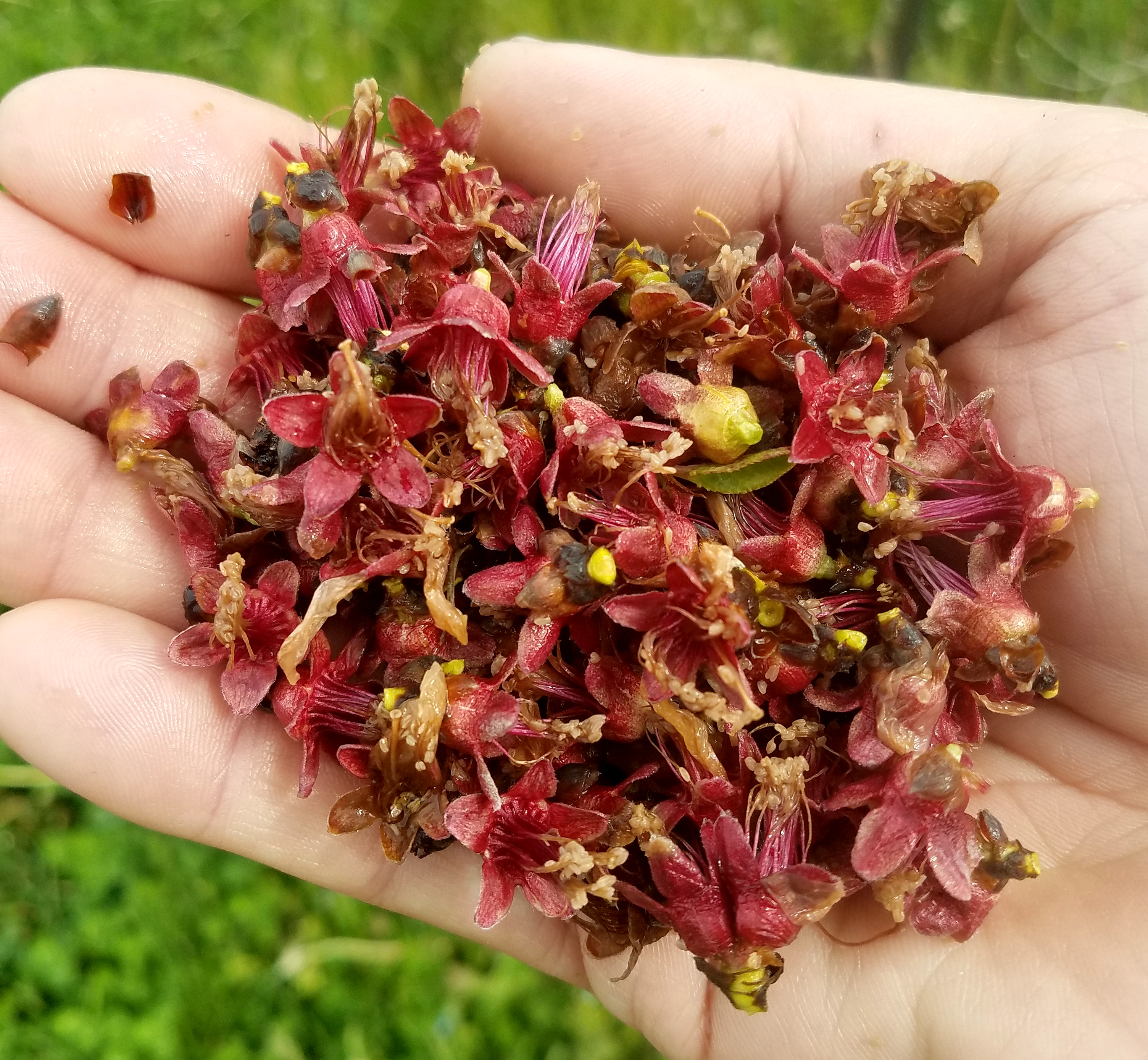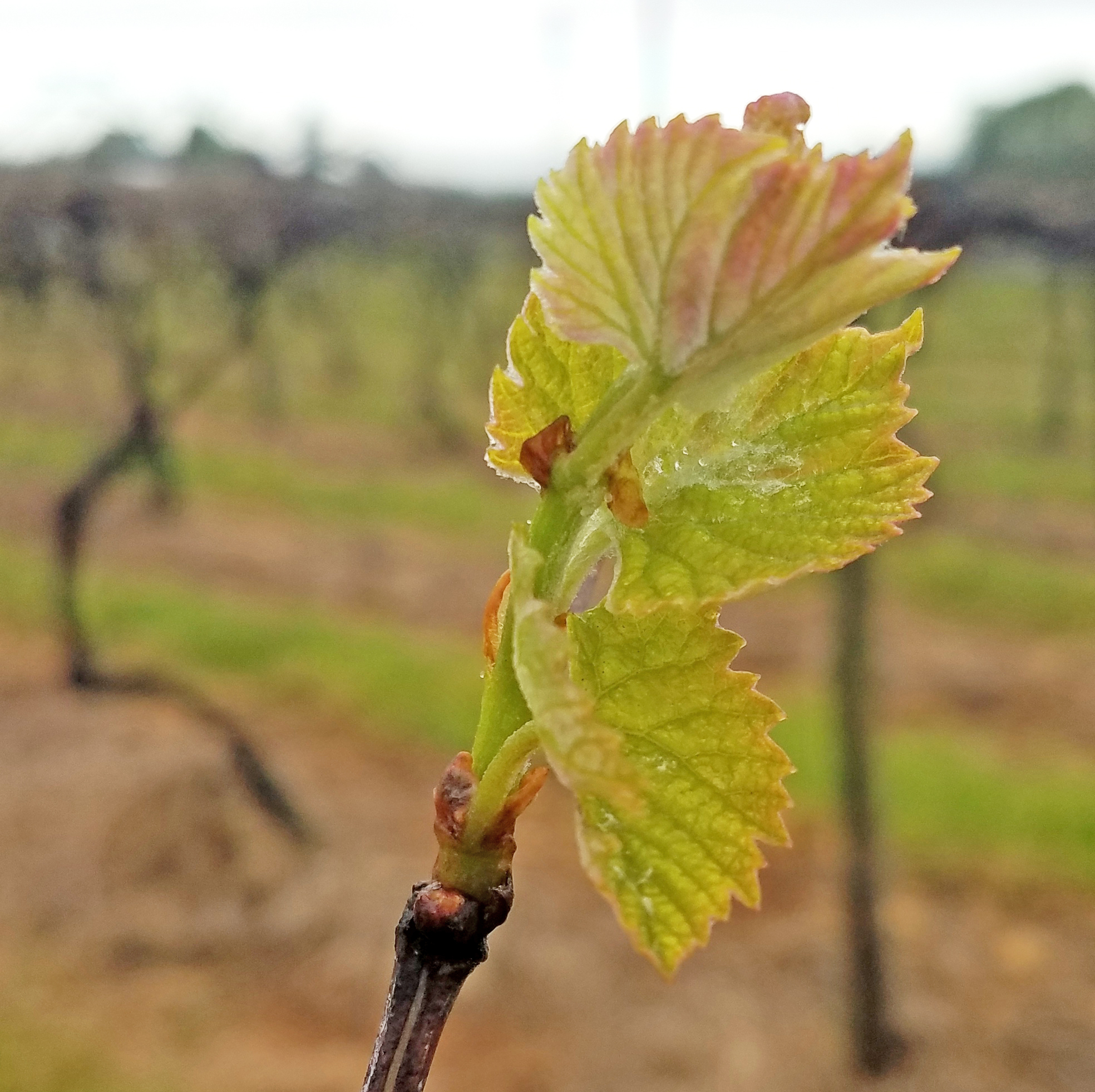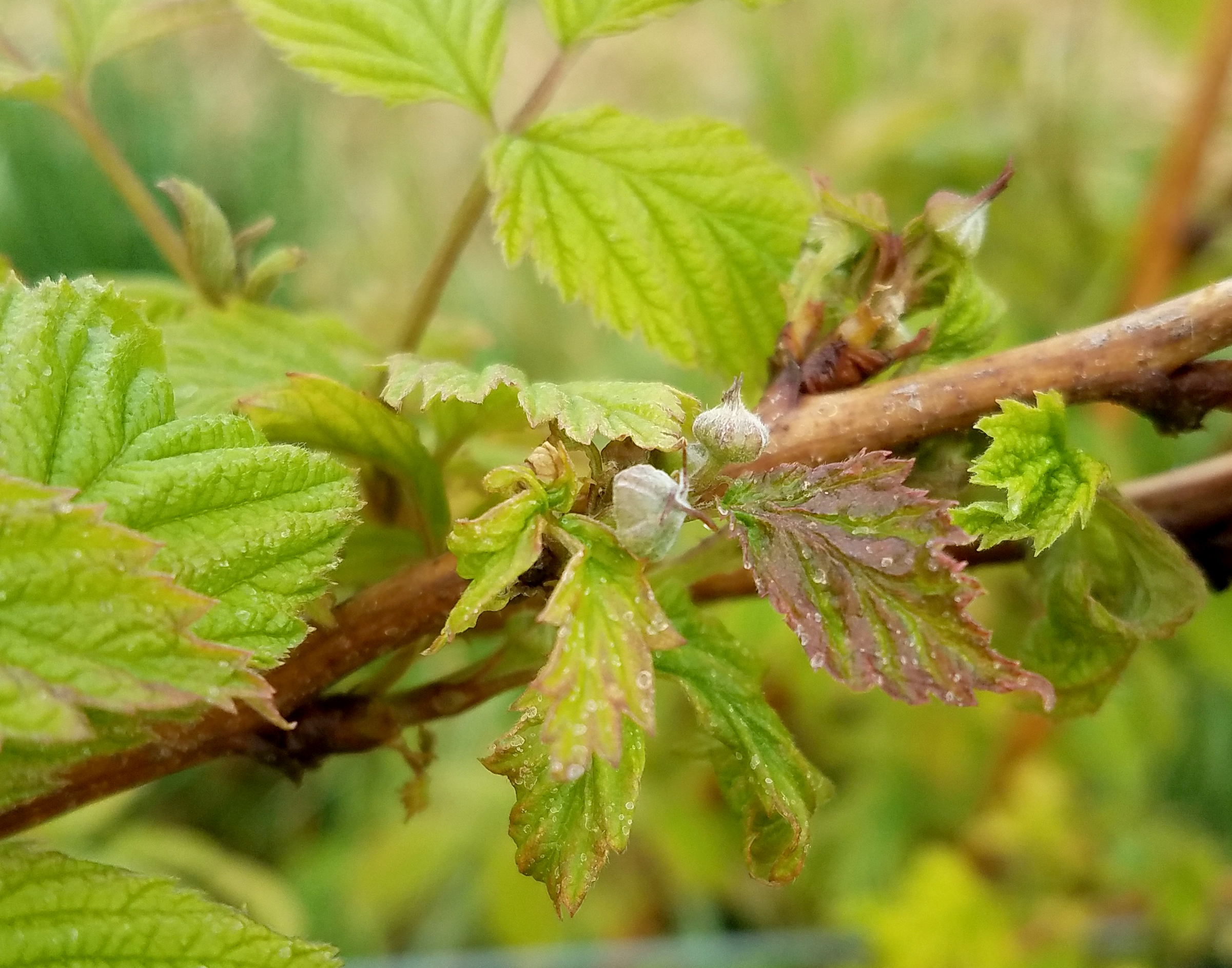Southwest Michigan fruit update – May 19, 2020
A warm, wet week brings lush growth and rapid plant development. Wet conditions could cause disease problems in the future.

Weather
Last week was warm and wet. High temperatures rose into the upper 60s and lower 70s. Lows rose into the 50s. Freezes last Monday and Tuesday morning, May 11 and 12, ended with the arrival of warmer weather. Widespread rain fell on Thursday and Friday, May 14 and 15. Saturday was warm and sunny. Rain returned on Sunday and continued Monday. The rains fell as long periods of showers with some heavy downpours. Rainfall totals for the week averaged 2.5 to 3 inches of rain across the region. Soils are saturated.
This week will continue to be warm with high temperatures in the upper 60s rising into the 80s by the weekend. The prolonged rain should end Tuesday, May 19, with a chance of showers the rest of the week. With a warm week, we picked up more growing degree days (GDD) last week: 88 GDD base 42 and 46 GDD base 50.
|
Southwest Michigan GDD summary from March 1 – May 17, 2020 | |||
|---|---|---|---|
|
Station |
GDD 42 F |
GDD 45 F |
GDD 50 F |
|
Benton Harbor (SWMRC) |
394 |
289 |
158 |
|
Lawton (Lawton) |
404 |
296 |
161 |
|
Fennville (TNRC) |
331 |
233 |
113 |
|
Average for the SW region |
396 |
290 |
158 |
|
Average last week |
308 |
218 |
112 |
Tree fruit
Tree fruit development has started to speed up over the past week. Oriental fruit moth and redbanded leafroller flights have begun. Codling moth flight is expected soon. There is still time to set up mating disruption for oriental fruit moth and codling moth in peaches and apples.
Apricots are coming out of the shuck.
Peaches and nectarines are in the shuck. Fruit buds frozen by low temperatures on May 9 are starting to drop, making it easier to assess crop potential. There is a range of freeze damage in the area. Dieback of branch tips is conspicuous due to damage last year by bacterial spot, phomopsis infections and entries by oriental fruit moth larvae. Low levels of copper from early spring to early shuck split are useful in suppressing bacterial spot populations. The amount of copper is to be reduced as the season progresses and growers need to monitor for phytotoxicity. Peach leaf curl symptoms are becoming easier to find.

Oriental fruit moth flight began at the end of April. The freeze on May 9 likely killed most of the newly emerged adults. This will push back development. May 12 is a good alternative biofix date for growers that saw this hard freeze. Timing of peach scab control is approaching. Management of this disease focuses on protecting fruit starting at shuck split.
Cherries are in the shuck. Growers are examining their trees to determine the crop following the spring freezes. Brown rot management is important when warm temperatures and rain occur together during bloom. Cherry leaf spot management should begin as leaves unfold and become susceptible to infection. Growers need to protect the tiny bract leaves, the first to unfold and become susceptible to infection.
In plums, Japanese plums are emerging from the shuck and European plums are in the shuck. Sprays for black knot are targeted on protecting new shoot growth from bloom to the end of shoot growth.
Apples are blooming. Varieties most affected by May 9 freeze in southwest Michigan appear to be Red Delicious, Gala, Pink Lady, Fuji and Jonagold. Promalin treatments can help suppress cold damage russeting for fresh market apples. Growers need to maintain their sprays to control powdery mildew and apple scab. Symptoms from late March and early April infection periods should be visible now on unprotected trees. Scab ascospores are being caught during rains in Berrien County. We are midway in the primary scab season. The peak of apple scab ascospore discharge occurs during apple bloom. Warm temperatures predicted for the coming week will bring the potential for fire blight infection.
Pears are in late bloom to petal fall. Low temperatures on May 9 caused significant damage in some sites. Pear scab is the primary disease concern now. Warm temperatures predicted for the coming weekend will bring the potential for fire blight infection.
Small fruit
Grape leaves are unfolding. Wine grape varieties are further behind. The heavy rains have been infection periods for black rot and phomopsis. Phomopsis sprays should be applied as leaves unfold and clusters emerge. In fields with a history of powdery mildew, choose fungicides with activity on both phomopsis and powdery mildew. Black rot control is most important later at pre-bloom and bloom.

Blueberry bloom has begun (see blueberry growth stages). Damage from the May 9 freeze is easier to see. There was damage to early blooming varieties such as Bluetta, Weymouth and Duke. These losses will not significantly influence the total Michigan blueberry production this year. The recent heavy rains have resulted in standing water in many fields. With the beginning of bloom, the disease control focus changes from suppressing mummy berry shoot blight to controlling mummy berry flower infections. Blueberry flowers are most susceptible to infection as they first open and become less susceptible as they age. This is the same timing as pollination of the flower. The earlier the bee visits the flower, the more likely that flower is to set fruit.
Mummy berry control sprays are focused on early bloom and full bloom to protect the flowers as they open or soon after. Growers should time their bloom sprays to reduce bee exposure to pesticides. Spray early or late in the day before or after the bees are active and foraging in the field. We are becoming aware that fungicides carried back to the hive can impact the health of the hive but we do not have a good understanding of which fungicides to avoid because most studies on pesticides and bees have focused on the adult bees of the field force and not the health of the hives and the brood inside. The forecast for this week is for warm and dry conditions, good for the bees to both pollinate the flowers and spread mummy berry if it is active in your field.
Later, the disease control focus shifts to controlling early anthracnose infections of green fruit. In late bloom and early green fruit, focus on anthracnose and the cherry and cranberry fruitworms, which emerge during bloom. Choose fungicides during late bloom to control anthracnose rather than mummy berry. Growers should have cranberry and cherry fruitworm pheromone traps out to determine biofix in their fields. Use the predictive tool on MSU Enviroweather to time fruitworm control sprays.
Strawberry flower trusses are emerging from the crown. Flowers are beginning to open. Many of these first flowers seem to be damaged from last week’s freezes. Many growers used their sprinkler systems to protect these flowers and many others did not. There seemed to be little difference.
Bramble shoots are growing and putting out flower buds. Some growers report damage to the emerging primocanes from the recent freezes.

Currants are blooming.
Cranberry beds look dormant but some spots have begun to green up and terminal buds are only slightly swollen.
Saskatoon bloom has ended.
Upcoming meetings
There will be no southwest Monday Fruit IPM Update next Monday, Memorial Day.
Related articles
- Farm resilience starts with a solid financial foundation
- Southwest Michigan fruit update – May 12, 2020
- Use fungicides for apple scab protection prior to anticipated early infection periods
- SDHI fungicides for apple scab management
- Scouting and management of mummy berry in blueberries
- Mummy berry has returned, and new products are available for control
- Michigan Blueberry Facts: Mummy Berry (E2846)
- Michigan Blueberry Facts: Anthracnose Fruit Rot
- Cherry fruitworm tool for IPM in blueberries
- Blueberry Fruitworm Factsheet



 Print
Print Email
Email




